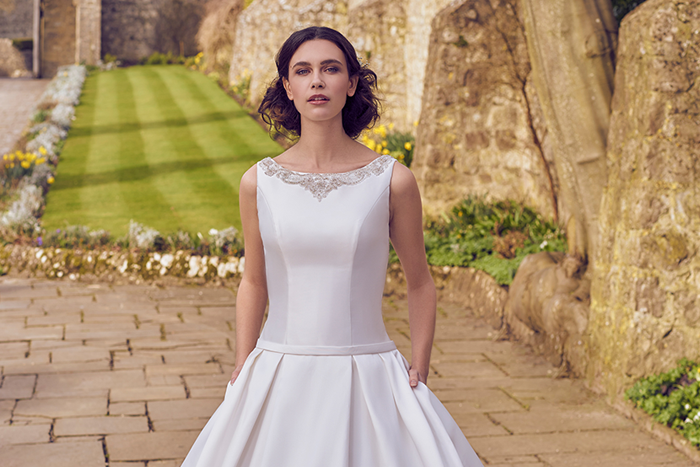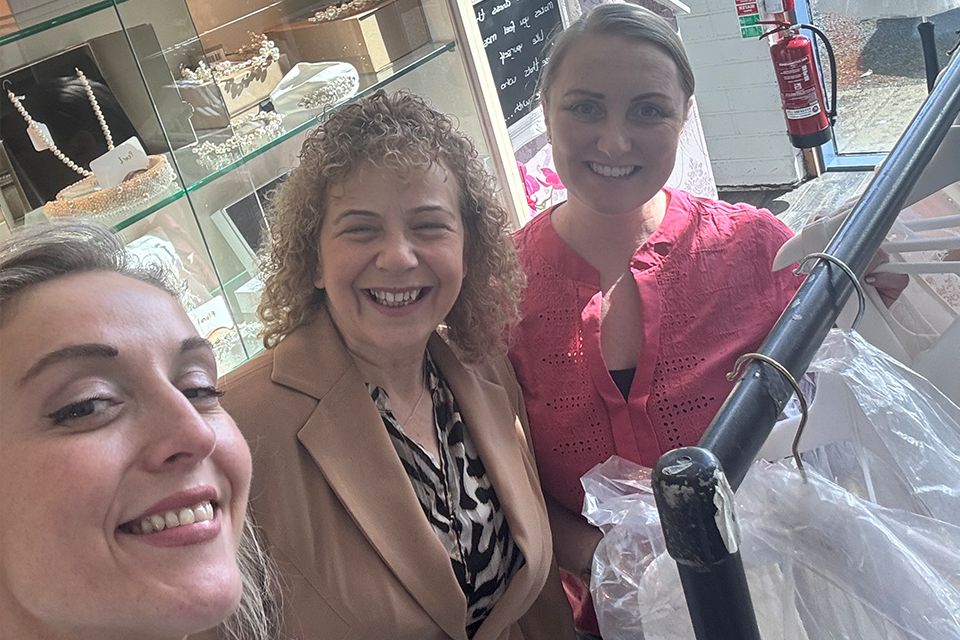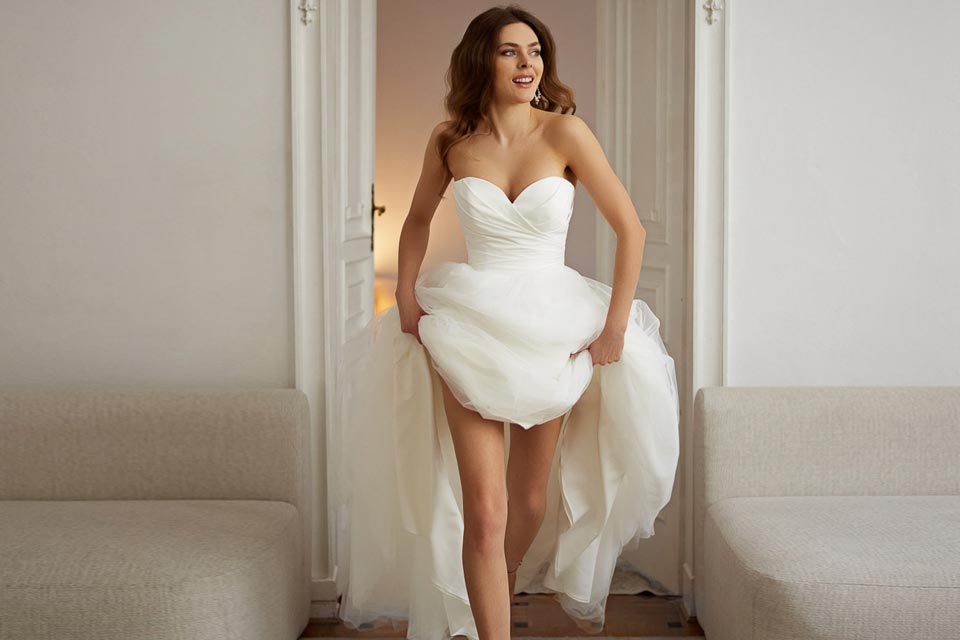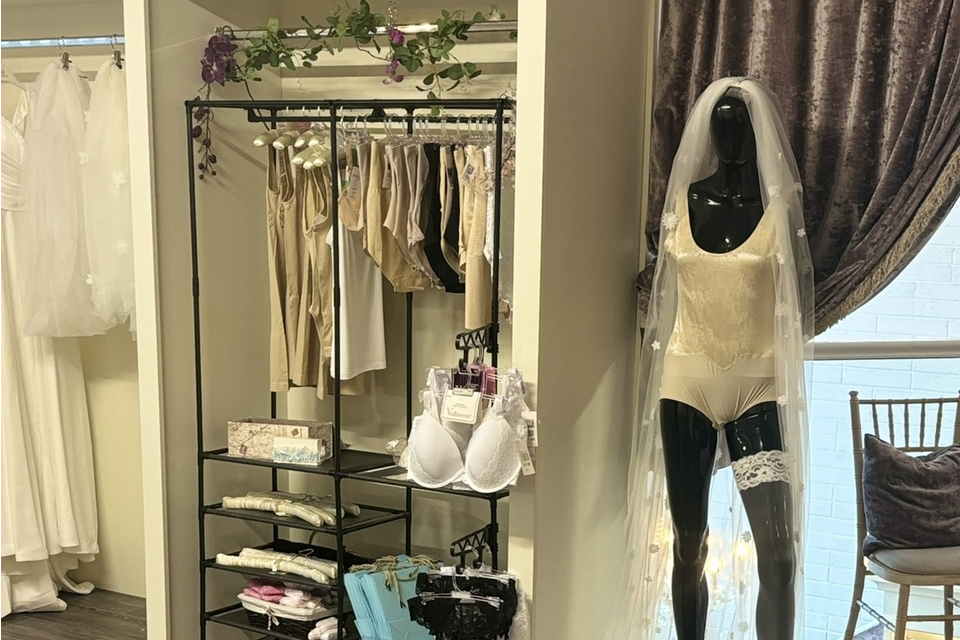Not all wedding dress fabrics ‘behave’ in the same way.
Some fabrics are better suited for structured designs, others are great for flowing, light and ethereal looks, and others for larger-than-life fairy-tale ballgowns. Here is what you can expect with some of the most popular fabrics we use…
Satin
Satin is a finish. You can have satin that’s made of pure silk, all polyester, or a blend. The same is true for lace, tulle, taffeta — almost any fabric. Satin is one of the most common, most versatile, and most durable wedding dress fabrics. Satin has a smooth finish with a lot of body, making it perfect for more structured gowns. It’s a supportive fabric that works with every body type. It tends to be a thicker fabric, it’s also a good choice for cooler weather weddings, particularly duchess satin.
Chiffon
Sheer and lightweight (think of the lightness of a veil), chiffon is a light woven fabric. Because it’s so sheer, it’s often used in layers or as an overlay for a more substantial fabric. This delicate fabric has a floaty, weightless look.
Organza
Organza is a sheer, lightweight woven fabric traditionally made from silk. Organza, however, is much stiffer than chiffon. Whereas chiffon drapes, organza is more structured, though still light and ethereal, making it perfect for warmer weather weddings. It, too, is a very delicate fabric, so needs to be treated carefully.
Tulle
Tulle is sheer with on open weave that looks like netting. The fabric can incorporate lace designs, as well.
Lace
Lace is one of the most popular wedding dress materials simply because it adds grace and elegance to any gown. Most often used as an overlay or detail, lace comes in very many styles. Lace is typically named for the city where they it was originally produced. One of the more popular varieties of lace is Chantilly – a very detailed, open lace with a defined border.
From Phoenix Gowns Blog. Original post: https://phoenixgowns.co.uk/wedding-dress-fabrics/





